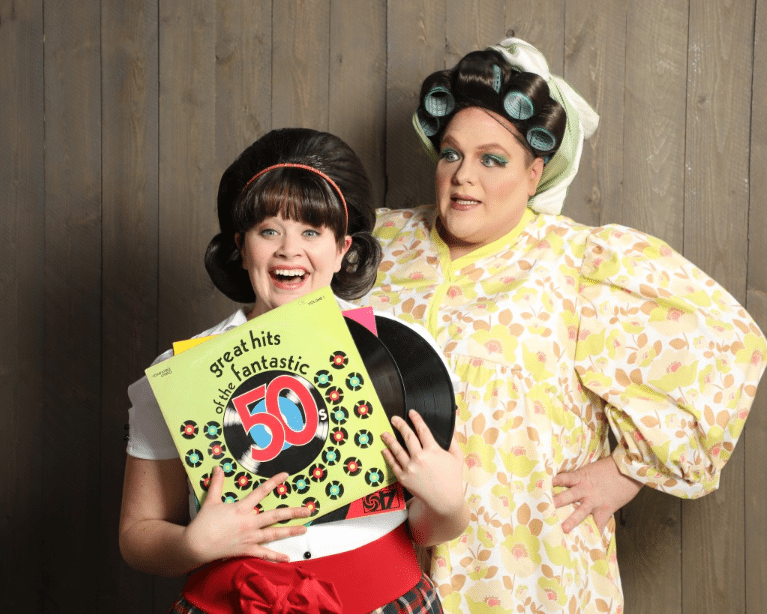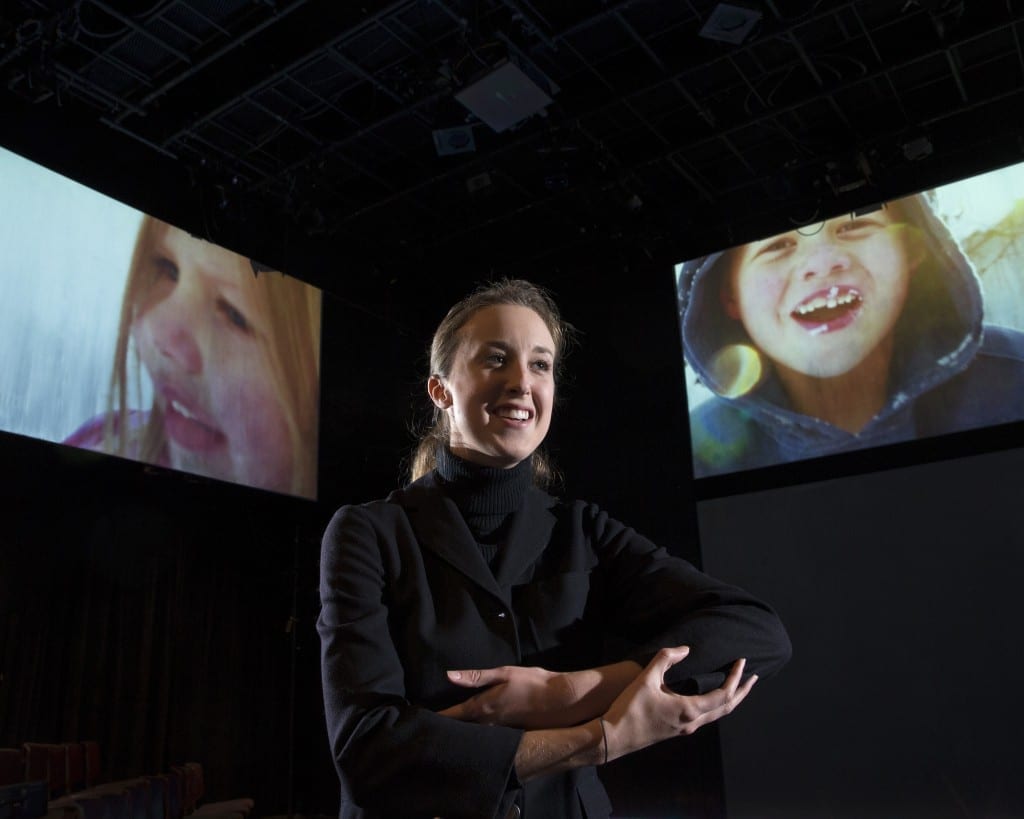OREM — The best sort of musicals are the ones that make me want to put away my critic’s pen and go be in a show. The current production of Hairspray at the SCERA is just this type of show. With of a joyous score (by Marc Shaiman, with lyrics by Scott Wittman and Marc Shaiman), colorful costumes, and entertaining choreography, it’s not clear whether the audience or the actors are having more fun in this production.

Show closes June 24, 2017.
Adapted by Mark O’Donnell and Thomas Meehan from the 1988 film of the same name, Hairspray tells the story of the Tracy Turnblad, a plus-sized teenager in 1962 who wants to be a dancer on her favorite TV program, The Corny Collins Show. After befriending some of the show’s African American dancers, she also wants to strike a blow for equality and desegregate the show.
Chelsea Lindsay played Tracy with a freshness that made me an instant ally of the character. Lindsay’s voice is sweet, and her enthusiasm in “I Can Hear the Bells” and “Welcome to the Sixties” was infectious. The earnestness that she gave the character made Tracy brave (and not naive) as she faced injustice. My only regret was that her rendition of “Good Morning Baltimore” lacked energy, which made the song disappointing. (To be fair, the rest of the cast also seemed to lack the enthusiasm needed for a grand opening number of a musical.)
Tracy’s mother, the frumpy overweight hausfrau Edna Turnblad, was played by Andrew Lloyd Hunsaker, who was so good at the role that I occasionally forgot that he was really a man. He made sure that Edna had a protective concern for Tracy’s emotional and physical well-being. Therefore, Edna’s decision to follow Tracy to a dangerous part of town understandable. “Welcome to the Sixties” was a strong moment for him, as he showed how Edna progressed from anxious trepidation about leaving the house to feeling pretty and confident (as many women feel after a makeover and some fancy new clothes).

Jaxson Dayton as Link Larkin and Chelsea Lindsay as Tracy Turnblad. Photo by Mark A. Philbrick.
Another strong performance was from Tearza Foyston in the role of Penny Pingleton. Many people don’t realize that Penny experiences the most growth over the course of the show, and Foyston made it believable that Penny could make the transition from a timid, submissive girl to brazen rule breaker and teenager in the throes of love. Plus, her dear-in-the-headlights look during “I Can Hear the Bells” was priceless.
Other impressive actors include Luseane Pasa as Motormouth Maybelle, who handled the rhyming dialogue with a great deal of charm. Her rendition of “I Know Where I’ve Been” was full of conviction and power, and it gave the second act the heart that the show needed. Jaxson Dayton had a velvety voice in “It Takes Two,” which made him a nice fit for the role of Link Larkin, Baltimore’s teen idol. Dayton’s body language showed Link’s mixed feelings about Amber Von Tussle (played by Sasha Sloan), and this behavior fueled the conflict of much of the first act.
Every summer the casting pool in Utah County is stretched thin as arts councils, festivals, and other theatre companies all compete for performers. Although the strong leads in Hairspray show that the SCERA usually fares better than most amateur companies in this competition, the cast of Hairspray had some noticeable weak links. Some ensemble members struggled with the choreography (Don’t look at your feet!), and two supporting actors (Dennis Wright as Wilbur Turnblad and Michael Thomas as Seaweed J. Stubbs) were weaker singers than they were actors or dancers.

Chelsea Lindsay as Tracy Turnblad and Andrew Lloyd Hunsaker as Edna Turnblad. Photo by Mark A. Philbrick.
The SCERA outdoor stage is so massive that it causes problems for some directors as they struggle to either fill up the space or to prevent intimate scenes from feeling like they’re occurring a mile away. Somehow, director Jan Shelton Hunsaker handled these problems exceptionally well. This was most notable in “Without Love,” where she filled the upstage steps with a choir that prevented the song from being confined to two isolated corners, and in “Mama I’m a Big Girl Now,” which had every female cast member on stage. Jan Shelton Hunsaker also ensured that the pacing of the show was brisk, thanks to the rapid scene transitions and well rehearsed cast.
Another asset to the production was Tiffany Winkel Nutter’s work as music director and choreographer. Her choreography was full of period dance steps, like the mash potato and the monkey, embodied the feeling of the 1960’s. “Run and Tell That” and “You Can’t Stop the Beat” were particular dance highlights, even if the choreography wasn’t always executed with expert precision by the amateur cast. The music directing was excellent, though by the end of the second act some actors voices’ were clearly strained from overuse. (Get some vocal rest this weekend.)

Michael Thomas as Seaweed J. Stubbs and Tearza Foyston as Penny Pingleton. Photo by Mark A. Philbrick.
Deborah Bowman‘s costumes were integral to creating the feel of the early 1960’s. I loved the solid, brightly colored suits for the boys on the TV show and the matching dresses for the women. These costumes popped and caught my eye each time they appeared on stage. Having a mismatch between Link and Amber was a nice touch, too, as it reinforced the strained relationship between the two characters. The set, designed by Jan Shelton Hunsaker and Brad Shelton, was versatile and capable of handling the play’s shift in location from with ease. One disappointment in the show, though, was the 21st century hairstyles that about five or six of the male cast members wore. This anachronism pulled me out of the setting of the show because so many other visual elements of the play were well matched to 1962.
Overall, Hairspray is an enjoyable production. The strong leads, fun choreography, and one of the best scores of the 21st century make it easy to forgive this production of its flaws. Utah County audience members who are looking for a fun-filled evening of theatre under the stars would have a safe choice in Hairspray.





